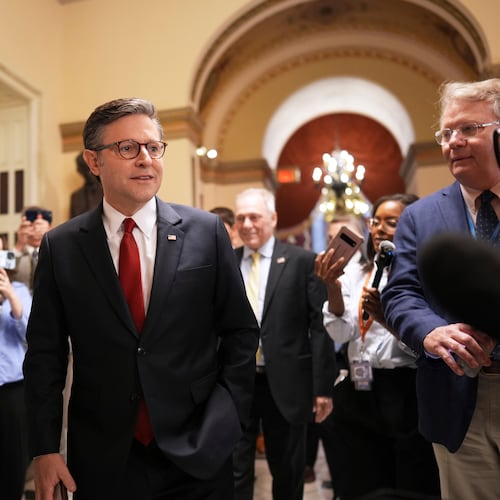Even after pumping an additional $300 million into k-12 education this year, Georgia is underfunding school districts by an average of $439 per student, according to a report from the Georgia Budget and Policy Institute.
The “Schoolhouse Squeeze” report, an update to one compiled last year, says districts are still facing great financial pressure long after the end of the Great Recession.
GBPI is a policy research group whose findings are often picked up by Democrats calling for more spending on public education. Its findings come as two statewide political races — for state superintendent and for governor — have focused heavily on the topic of public education.
The two Democrats in those races, former City Schools of Decatur school board chairwoman Valarie Wilson and state Sen. Jason Carter, say the group’s findings underscore a central theme of their campaigns: Georgia has short-changed public schools and needs to spend more on them.
“That’s what I’ve been saying from Day One,” Wilson said. “This state has not provided adequate, full funding.”
Carter, who has called for a separate budget for public education, blamed his Republican opponent, Gov. Nathan Deal.
“Gov. Deal has shorted our schools by billions of dollars, and students and families are living with the consequences today,” Carter said. “We’ve lost 9,000 teachers, class sizes are up and school years are shorter. On top of that, most districts have had to raise property taxes to try to make up for the cuts. As governor, I’ll make sure we fund education first and undo the deep cuts that are hurting our economy and moving Georgia in the wrong direction.”
A Deal spokeswoman, Sasha Dlugolenski, said the governor has prioritized public education:
“Even when most other state agencies took cuts, the governor increased education spending,” she said. “Once revenues recovered, the governor put half a billion into k-12 education — the largest single-year increase in k-12 funding in seven years. The governor has shown that every cent we can put into our schools, we will. He has made education a priority in his first term and will continue to do so in his second.”
Efforts to reach the Republican nominee for superintendent, Richard L. Woods, for comment on the report were unsuccessful.
GBPI’s analysis indicates that, since 2003, school districts have received a combined $8.4 billion less than called for under the state’s complicated funding formula.
The absence of that funding, combined with property tax revenues that cratered during the recession, led to teacher furloughs, larger class sizes and shortened school calendars.
Jay Dillon, spokesman for the Cobb County School District, said additional funding from the state has been a big help.
“We are grateful for the additional funding we received this year as it has restored some normalcy to our budget,” Dillon said. “We are still underfunded by approximately $45 million, and that additional funding could be used to hire 600-700 additional teachers, which would in turn reduce class sizes across the district.”
With less money from the state, local school board members have approved politically unpopular property tax increases.
“State policymakers should demonstrate an equal commitment to Georgia’s students and prove their willingness to foster a strong economy,” the report concludes. “They set higher expectations of students to ensure they are fully prepared for post-secondary study and to compete in a knowledge-driven global economy. They outlined promising policies to help students get there. They should now provide all the resources students need to meet these expectations.”
About the Author
Keep Reading
The Latest
Featured


